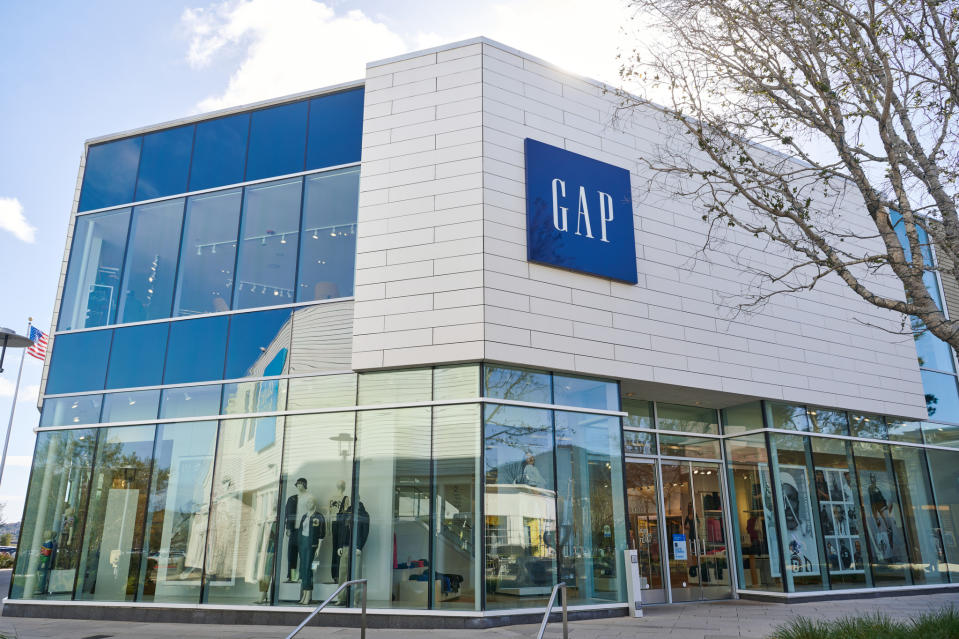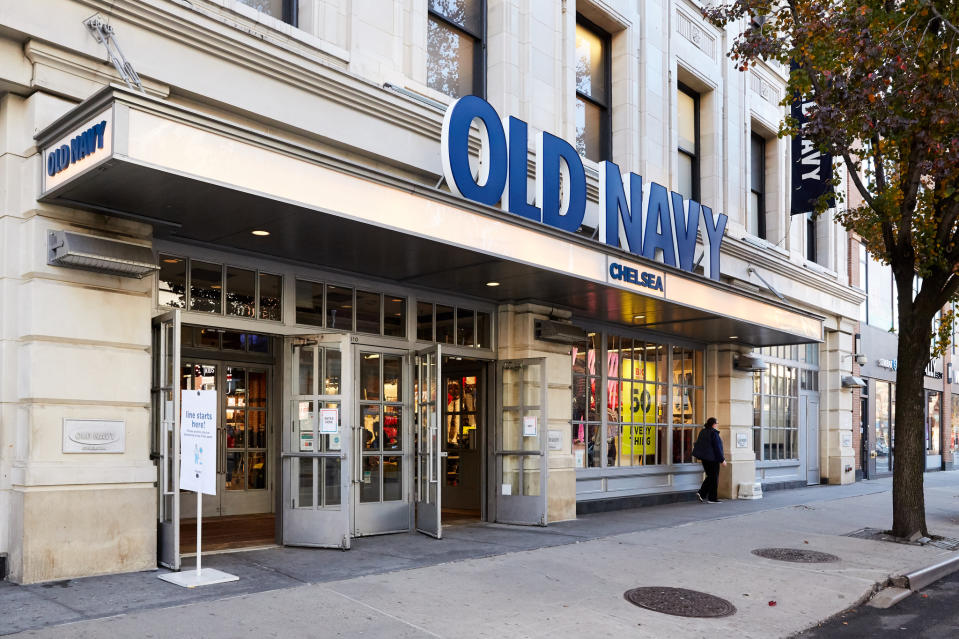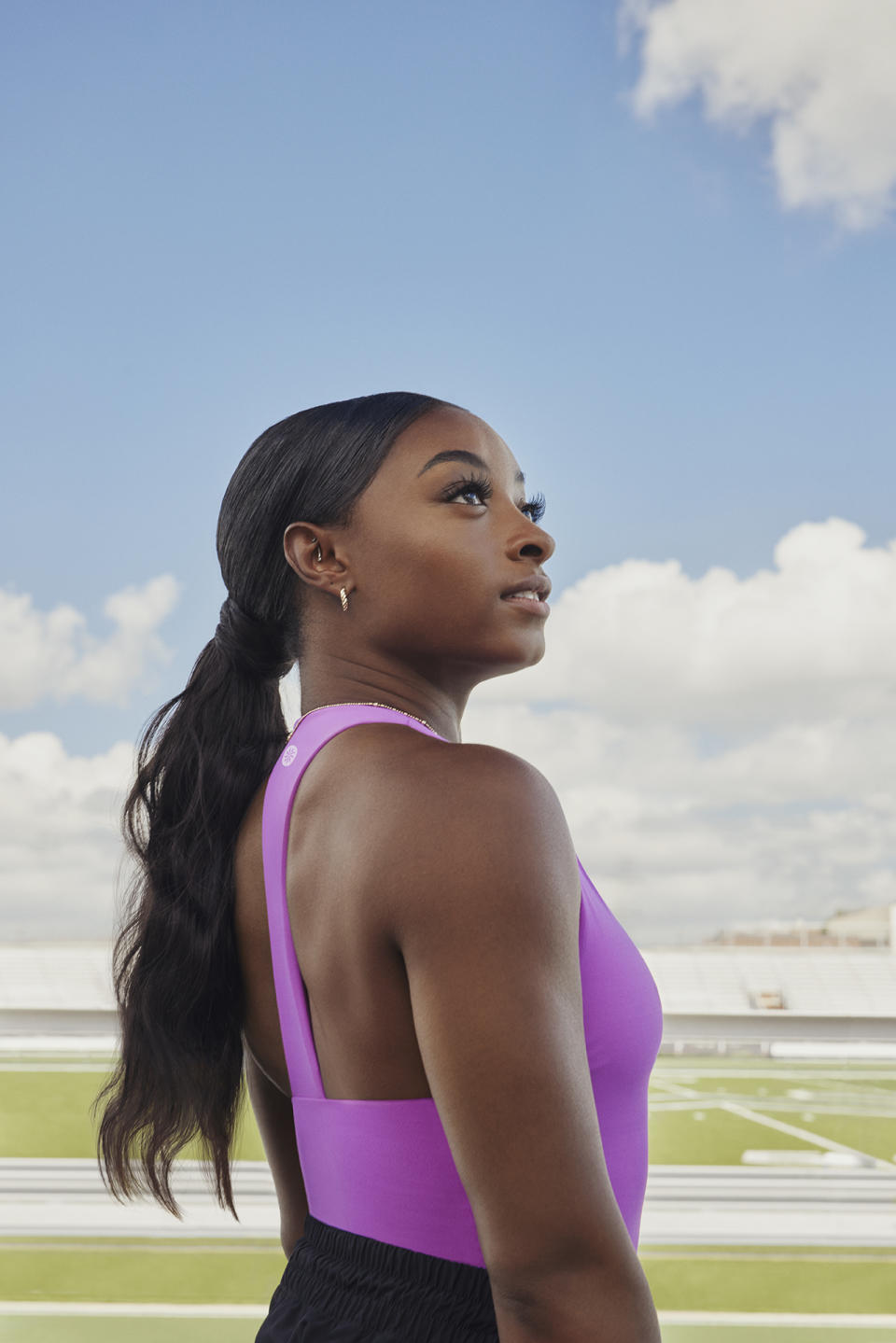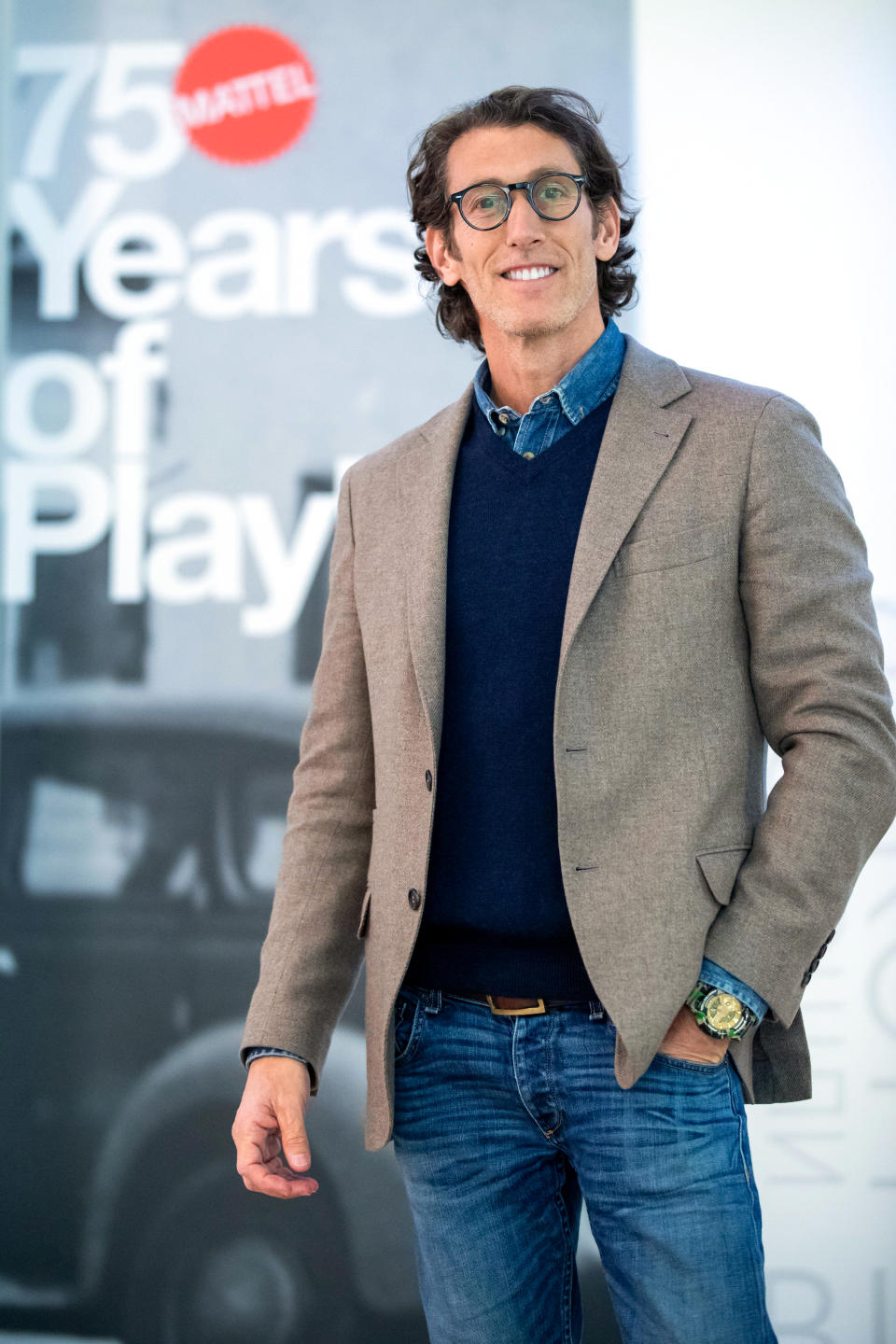What Richard Dickson Prescribes for Gap Inc.

Since becoming president and chief executive officer of Gap Inc. two months ago, Richard Dickson got close to the team and was surprised by what he found.
“It’s the talent and the history that people have with this company, and a desire to win. There’s a true sense of ambition for what everybody thinks the company should be but isn’t. And there’s confusion internally,” Dickson told WWD. “Why aren’t we as relevant or popular or as big as we should be? People work very hard. They’re very, very passionate. They believe in the brand. But yet we’re not breaking through.”
More from WWD
With Dickson taking the helm, there’s finally optimism within financial and fashion circles that better days could be ahead for the San Francisco-based, $16 billion corporation.
The CEO got an early nod of approval from Wall Street after the company reported its third-quarter results on Thursday.
Although net income fell 22.7 percent to $218 million in the quarter, adjusted earnings per share came in at 59 cents — 39 cents better than the 20 percent profit analysts projected, according to FactSet. Investors liked what they saw and traded shares of Gap up 10.9 percent to $15.16 in after hours trading.
Sales for the quarter ended Oct. 28 declined 7 percent to $3.8 billion — with an estimated 2 percentage points of that decline attributed to the sale of Gap China. Comparable sales were off 2 percent, with Old Navy up 1 percent, Gap down 1 percent, Banana Republic off 8 percent and Athleta dropping 19 percent.
Dickson’s experience in merchandise and brand building seems to bode well for the business, unlike the four previous Gap Inc. CEOs of the past 20 years. Their expertise was largely in non-merchandise areas and for each, the quest for a turnaround fell short. But on the news last July of Dickson’s appointment, Gap Inc.’s stock perked up 7.7 percent to $9.92.
Before becoming Gap Inc. CEO, Dickson was president and chief operating officer of Mattel and helped strategize the craze around the 50th anniversary of Barbie and the blockbuster “Barbie” movie. Prior to that, he was president and CEO of the branded businesses for The Jones Group, where he is credited with bringing back some relevance back to dated fashion labels. He also cofounded gloss.com, the first online retailer for high-end cosmetics, and was an executive at Bloomingdale’s. Dickson has been on the Gap board of directors since November 2022.
In an interview at Gap Inc. offices in lower Manhattan, Dickson — dressed in a Banana Republic hoodie and jeans — touched on issues at Gap Inc. surrounding pricing, storytelling and the balance of basics and fashion. He spoke of strengths, weaknesses and opportunities at the brands in the Gap Inc. portfolio, which includes Gap, Old Navy, Banana Republic and Athleta. He also underscored “doing fewer things better” and addressed what he feels he brings to the organization.
“If I was a doctor, I would say each brand has a different prescription. But each one is in its own form of revitalization,” Dickson said.
Efforts involving margin expansion, SG&A reduction, and optimizing and reducing the store footprint, Dickson said, have created a stronger financial footing for the company to now redirect attention to reinvigorating its brands. “We will maintain operational and financial rigor. There’s always opportunities to be more effective and efficient. And that will be the price of entry to running our business. But ultimately that builds into a revitalization story,” Dickson said.

Repairing Gap Brand
A true Gap Inc. turnaround, encompassing consistent quarterly top- and bottom-line gains and pumping new life into the brands that people want to shop more often, poses a monumental task and perhaps the trickiest part is getting the Gap brand back on track. It’s a matter of sharpening its identity, improving the fashion, reclaiming dominance in denim and building wardrobes around it, and getting people back to the habit of shopping the store.
From Dickson’s perspective, the mission calls for “reigniting the brand in the context of its cultural conversation and its relevance and returning more to a branded narrative versus a retail narrative. Over the years, Gap has lost its precision around those brand attributes breaking through, and to some extent, it became more of a traditional retailer focused on price and promotion, and less about the clear and distinct brand positioning that made it all so great.”
Specifically, “very reliable basics have sustained the business for decades. What we need to do is a better job creating more of a fashion appeal as well,” Dickson said.
With Gap’s pricing, “We need to build more trust with our consumer.” It’s not a matter of raising or lowering prices, he said. It’s about pricing that’s “clear and precise.…We have a lot of different price conversations for consumers to excite them, and in all of that communication we get very confusing and ultimately become a very promotionally driven brand versus [providing] great product at great value.
“The Gap was for all ages, all races, all sexes,” Dickson observed. “It took basics and made them fashionable. It created a retail experience before people were talking about what a retail experience is. It built its brand off music and pop culture. When you really look back at what made Gap so great, Gap was a storytelling brand. It was in large part entertainment, and if you think about what that means, you think pop culture. Gap is a pop culture personified brand. It’s expressed through what we do and what we sell, but it means so much more. We have to get our arms around how we start to express that pop culture narrative in a more meaningful way that celebrates our heritage, and rewrites the future.
“If you look at the walls in the hallway here, you see a photo of Naomi Campbell, and all the people that represented the Gap. She’s wearing a T-shirt. There’s nothing fascinating there yet it was the personification of our times and it was the language of a pop culture brand. Today we don’t have that as part of our conversation.”

On Old Navy
Industry analysts have suggested that the turnaround work at Gap Inc. should initially prioritize further streamlining and repairing Old Navy. Considering its size, Old Navy is considered the key to the overall health of the corporation and continuing stock price gains. Old Navy accounted for $8.23 billion in sales, or more than half of Gap Inc.’s total volume, of $15.6 billion last year. Concerns center around shrinking sales at Old Navy, fashion misfires, recapturing its quirkiness in a fresh way and stores that seem old.
“We are going to be working on what we’ll call the ‘store of the future’ for Old Navy, and then pressure testing that for all of our brands,” Dickson said. “Each brand will have an absolute revision of their experience. In large part, our retail fleet is in need of revision. Old Navy still has a strong fleet with opportunities to continue to expand. However, the focus is going to be on ensuring our footprint reflects a better brand persona and a better brand experience before we continue to expand more doors. Collectively we have got to do fewer things better. That, to some extent, is a bit of a mantra, and it applies to many things, including store expansion.”
Dickson acknowledged that Old Navy’s plunge into plus sizes beginning in 2021 “took a very big toll” on the business. “It was a strategically well-intended initiative around body diversity and inclusivity. But it was also an over-rotation, which led to inventory issues. Marketing messages got a bit confusing. It was a misfire that was kind of a shock to the system.”
The company got too zealous investing in inventory and marketing the plus sizes and came up short or late with sizes and styles in demand. The pandemic, supply chain disruptions, late deliveries, temporary closings of Vietnamese factories and Gap Inc. stores created a perfect storm, Dickson said. “The mechanics of the business collapsed,” he said. Old Navy continues to carry a wide range of sizes, as it should, Dickson noted.
On the other hand, “For the most part, the quality at Old Navy is above industry standards,” Dickson observed. “We invest a lot in our fabrications. Our supply chain is best-in-class. We pay a lot of attention to sustainable materials and ethically, our standards are quite high.”
We have adjusted our supply chain to allow for what we’ll call ‘chase,’ where we have the opportunity to design, develop and execute against trends more proactively.”
Richard Dickson, Gap Inc.
Sharpening the Banana Appeal
With Banana Republic, “We’ve done a lot of really good work soul searching the brand’s heritage and trying to interpret that heritage for today’s consumer,” Dickson said. “The aesthetic we have begun to roll out, in store design, product and in merchandising is more on par with what we believe the Banana Republic has to be. It’s quiet luxury. It’s affordable luxury.…We have work to do. We have work to do in fit. We have work to do in pricing, and we have continued work to do in styling a product. But I do believe we are actually finding a new chapter of exciting growth for Banana. On the spectrum of ‘good, better and best’ if Old Navy is good and Gap is better, then Banana would be best, and in that context, I believe we are on our way.”
Last spring, Banana Republic launched into the home business with textiles and subsequently added furniture, lighting and decor to the collection. “It’s aesthetically beautiful,” Dickson said of the home collection. “It’s got great value associated with it as well. There’s a reason for it to be. It’s an extension of our brand that has credibility, to exist, but needs further attention and work to ensure that has credibility and connectivity. It needs work. It’s the right intent. And we need to ensure that the pace that we evolve it takes in careful consideration along the way. We don’t want to expand too far too fast. Once we work out the mechanics of how to do it effectively, I believe it will be a great extension of our brand.”
With a Banana Republic Home pop-up operating in Manhattan’s SoHo neighborhood, Dickson suggested opening additional Banana Republic home stores is a possibility.
Regarding other possible extensions of brands, Dickson said, “Whether that’s beauty, wellness or other categories within apparel, all of these become interesting, though they have to relate to the brand positioning. Arguably, Banana is a great travel brand. You can see us coming out with a phenomenal line of luggage. Because that’s the brand DNA, much more so than you’d see Athleta coming out with luggage. We have to carefully curate based on what the brand’s strategy and positioning is and understanding the consumer and the experience the consumer has with our brands.”

Speed, Agility and Talent
Asked if Gap needs to be quicker on delivering newness and trends, Dickson said, “Being nimble is a really important part of, frankly, any brand’s objective today. We need to move faster on many fronts. We need to move with the speed of culture. That is an art as much as a science.
“We have adjusted our supply chain to allow for what we’ll call ‘chase,’ where we have the opportunity to design, develop and execute against trends more proactively. There is an adjustment in our model that will allow for reacting and responding better than we have in the past.”
Dickson said Gap Inc.’s production cycle can go anywhere from 12 to 18 months. “We’re trying to get more deliberate around what I call ‘a fast lane’ to our overall product development process,” enabling the retailer to chase and capture trends and have the open-to-buy for that. “We’re being much more conscious and leaner around our inventory management, to allow the ability to chase trends and be more aggressive about the pursuit of the right product at the right time for our consumers.” Gap strives to be on trend, not trendy, he stressed. “Fast fashion leans more to trendy, which is not our space.”
Asked if there is room to bring in new talent, Dickson answered, “We’re always assessing and evaluating our talent associated with what our objectives are. There’s great talent in this organization. With new leadership, new expectations, new vision, a lot of the talent is going to step up to a new level of creativity. But I do think there’s an opportunity to recruit and attract new creative talent.”
There’s been some buzz that Jenna Lyons, former J.Crew executive creative director and president, CEO and cofounder of the LoveSeen beauty brand and reality television personality, could have a place at Gap Inc. Dickson would not comment on the speculation, other than saying, “She’s an extraordinary talent and a good friend.”

On Collaborations and Yeezy
“All collaborations and brand extensions should speak to a very clear brand strategy, and a strong brand position. So that there’s no reason you’d say ‘Why?’ Or ‘what are they doing with that person? Does that make sense?'” Dickson said.
“Some of the collaborations have been wonderful to spark interest, spark conversation,” Dickson said, citing the recent Shawn Witherspoon and Peter Do partnerships, and of course Gap’s Barbie collaboration. Athleta has orchestrated successful ongoing collaborations with Olympic gold medal winners Allyson Felix and Simone Biles.
He acknowledged Gap could be “much more impactful and strategic about how we move forward leveraging partnerships. Many of the programs that were interesting didn’t have legs. Yeezy was great, well intended, arguably one of the most exciting collaborations of its time.” But it unfortunately failed, he said.
Our brands need to have a much stronger point of view.”
Richard Dickson, Gap Inc.
The Vision
Asked if he is developing a multiyear plan of objectives for Gap Inc., and if he brings a new vision to the business, Dickson said yes to both, though he expressed the path ahead in his own way. “It’s best to think about it in terms of achieving short-, mid- and long-term goals. In the short term, I’m doing a lot of listening and learning and immersing myself in the business. I’m starting to balance out where I could have immediate impact, and where there’s more thoughtfulness about unlocking the value of the portfolio.”
The midterm, Dickson said, is when the company “reveals a bit more of the vision, the strategic narrative, the structure that we’re going to need to support the strategy, capabilities and unlock the talent in the organization and bring in new talent.
“Ultimately, the long term, will be how we grow these very big brands to be more meaningful, both in relevance and revenue.
“All of this is arguably part of the vision,” Dickson said. “What I really believe I bring is an unlock of the value of what these brands already represent, but haven’t been articulated clearly for today’s consumer. That’s really my strength.
“Our brands need to have a much stronger point of view. We need to do fewer things better and have more meaning associated with our brands, visually and narratively, so you get the experience you are looking for.…Right now you’re not seeing anything that relates to you other than good stuff. So we leave it up to you. Right? Versus showing you.
“The irony behind our businesses is we do $15 billion worth of business. So it’s not as if this place doesn’t do business.”
Dickson on Dickson
Asked if he considered himself a storyteller, Dickson replied, “I consider myself a chief editor officer. We’re telling too many stories. We need to edit ourselves to tell a more clear and precise story that stays consistent and has a relentless, repetitive narrative to it.” That, he said, is how you build trust and consistency with consumers. “We don’t have to have everybody like us, but you have to have a strong point of view, and not everybody will love it.” The challenge, Dickson said, “is to make those who love you love you more, and get new people interested. Arguably, we have been trying to do too many things for too many people.

“Each one of our brands is a storytelling brand. My role is to create more precision and framework for people to be free to create while maintaining operational and financial rigor.”
It’s not his approach to focus on one brand or aspect of the company at a time, fix it and move on to the next. “This is a business where you can’t fix one thing and assume everything else will find its way. You’ve got to collaborate with all the moving parts and acknowledge the issues that we’re trying to solve and do it collectively.…I do believe you have to be able to do multiple things at the same time, particularly in a business like this. I’ll give you an example. I could do a phenomenal marketing campaign tomorrow. That is not a challenge for me or for us. But delivering a phenomenal marketing campaign, and then driving traffic into a place where the product disconnects with the marketing would be a failed attempt. So you need to create the product, the store experience, the imagery, the sound, the visuals, the narrative, the copy, the creative, the merchandising, and the marketing, so that the consumer experience is exciting and complete. That matters because then you build trust, and trust is the single biggest attribute I believe a brand can have.”
Best of WWD


